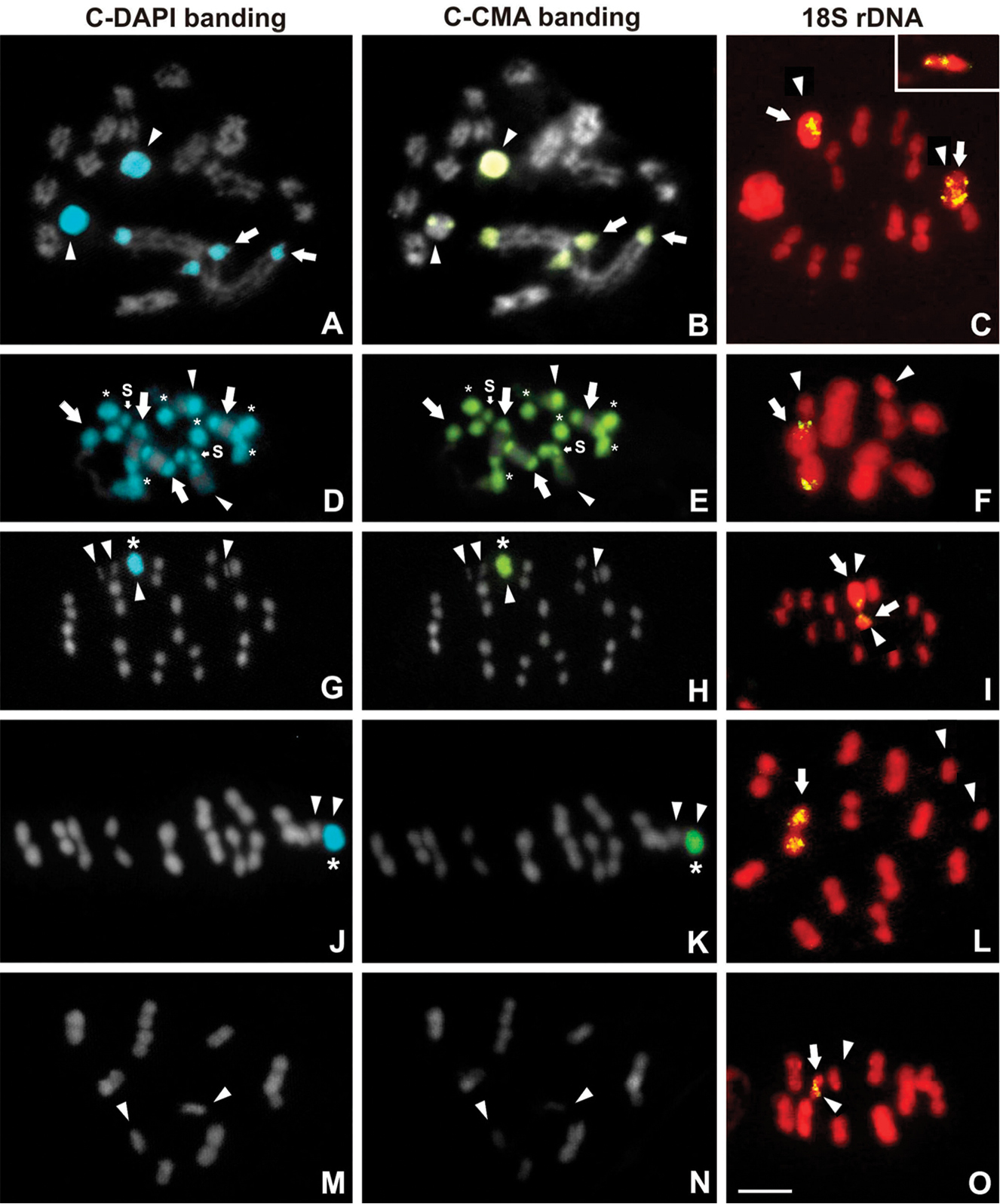
|
||
|
C-DAPI/CMA banding and FISH with 18S rDNA probe in five predatory species of Reduviidae. A–C Apiomerus lanipes. Diplotene: terminal DAPI+/CMA + bands in the largest bivalent (arrows), one sex chromosomes totally DAPI+/CMA+ (arrowhead) and the other sex chromosome totally DAPI+ (arrowhead) with a terminal CMA+ dot. In metaphase I, the hybridization rDNA signals are located at terminal positions of both sex chromosomes (arrow and box - metaphase II) D–F Montina confusa. Gonial mitosis with two autosomal pairs and both sex chromosomes exhibiting DAPI+/CMA+ bands at both terminal regions (arrow and the word S, respectively), one autosomal pair with DAPI+/CMA+ band at one terminal region (arrowhead) and three autosomal pairs totally DAPI+/CMA+(asterisk). In metaphase I, ribosomal loci are located on the largest bivalent (arrow) G–I Cosmoclopius nigroannulatus. In metaphase I, the Y chromosome appear entirely DAPI+/CMA+ (asterisk) and hybridization signals of rDNA on two sex chromosomes in metaphase II (arrows). Note the aggregation of the three X chromosomes J–L Zelus laticornis. Metaphase I has one sex chromosome totally DAPI+/CMA+ (asterisk), and the rDNA sites are situated on one bivalent (arrow) M–O Repipta flavicans. Diakinesis without heterochromatic regions. The hybridization signals are located on one sex chromosome in metaphase I (arrow). Arrowheads indicate the sex chromosomes. Bar = 5µm. |